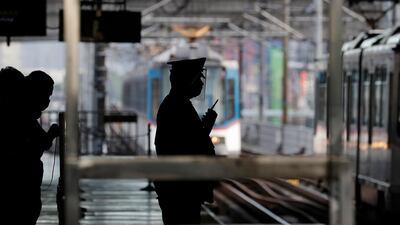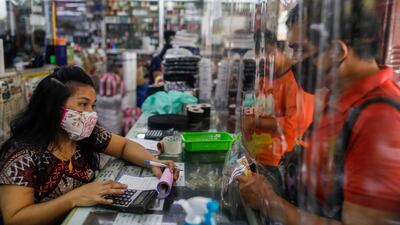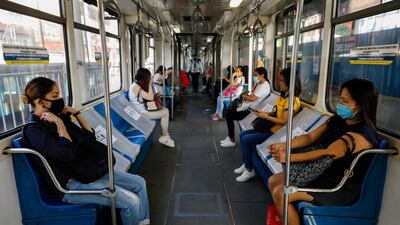Streets were busy with traffic in Manila on Monday as coronavirus lockdown measures were lifted.
Philippines President Rodrigo Duterte on Thursday approved a recommendation to ease the lockdown in the capital from June 1, resuming much-needed activity in an economy on the brink of recession.
Strict restrictions on trade and movement since mid-March have hurt the economy, which is facing its deepest contraction in 34 years.
"The virus is frightening," salesman Himmler Gaston told AFP. "But it's either you die from the virus or you die from hunger."
Commuter trains, taxis, ride-sharing cars, special shuttle buses and motorcycles rumbled back on the road in metropolitan Manila but were only allowed to carry a fraction of their capacity as a safeguard.
Public transport was still limited by the relaxed rules and many commuters waited for hours to get a ride despite the government restoring bus services.
Normally packed train carriages had plastic sheets covering some seats and markers on the floor to ensure passengers kept their distance from each other.
Despite the risk of being exposed to the virus on his way to work, 27-year-old barista Paul Escala said the train was still safer than riding his bicycle.
"It's safer here. If I'm taking the bike, I have two opponents: the virus and unruly motorists," he said.
A larger swarm of private cars also led to congestion on the roads.
“Many people are now allowed to go out and many industries are reopening so you’ll see a lot of vehicles ... but the situation remains abnormal,” said police Lt Gen Guillermo Eleazar.
He warned that police will still go after violators who would not wear face masks and observe physical distancing.
School classes remain suspended for the next two weeks. Barber shops and beauty salons can open next week at a third of their capacity.
The Philippines remains a Southeast Asian hot spot for Covid-19, with more than 18,000 infections and 957 deaths.













